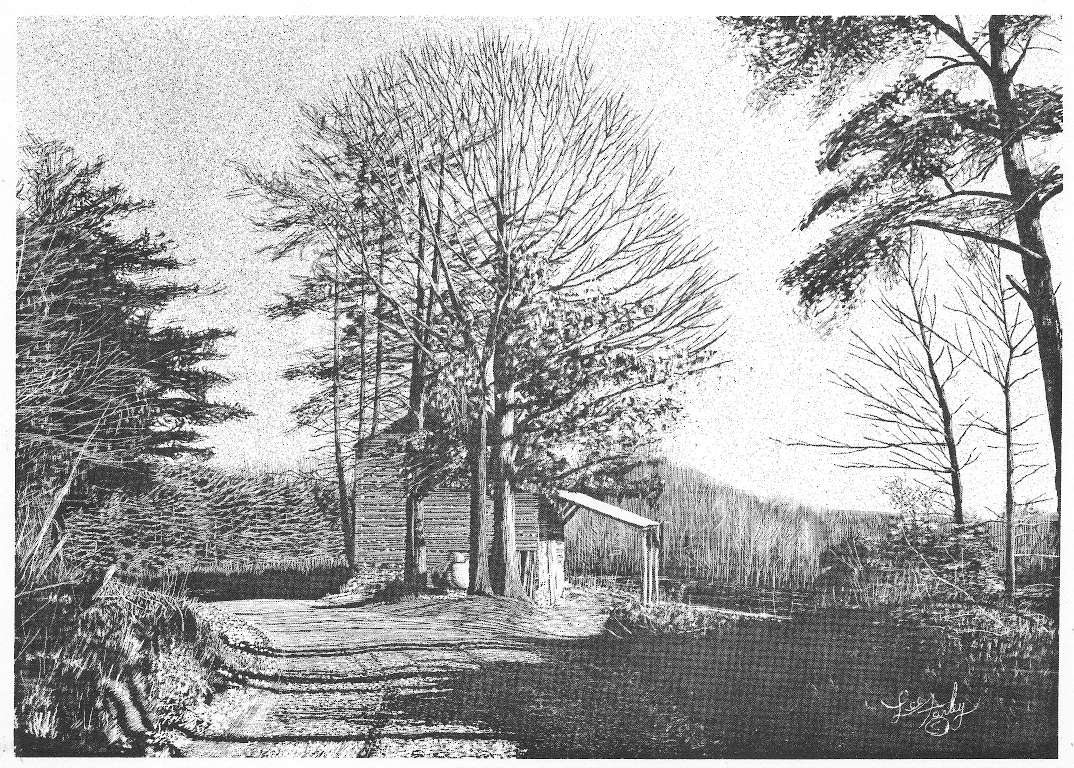The scratchboard technique came into popularity at the turn of the century as a more economical way to illustrate textbooks than the use of etchings or engravings. Old texts contain scratchboards that more closely resemble woodcuts. The technique begins with a special board coated with a thin layer of porcelain. Student grade boards are coated with coarser materials, making them less forgiving of mistakes and actually more difficult to work with. It is also possible to do scratchboard on the newer Clayboard product. The board can be purchased pre-inked all over with black. Since I use a lot of airbrush in my skies and other smooth areas, I prefer the white board. This method renders the finished product with a less "scratchboardy" apperance and at first glance one may not think it is a real scratchboard. Once the drawing is sketched in, whole areas of color are blocked in, either with a brush or with a masking material called frisket, and an airbrush. After the color has dried, details are scraped or scratched off with razor sharp tools. Scratchboard technique is very apparent in tree bark, grasses, foliage, hair, etc.. My style is very realistic in detailing and rather surrealistic in my use of color.
A good book that explains the technique is Scratchboard For Illustration by Ruth Lozner which was published in 1990 and republished in 2017. This book features one of Lee's color scratchboards "Cabin Fever" on page 122.


